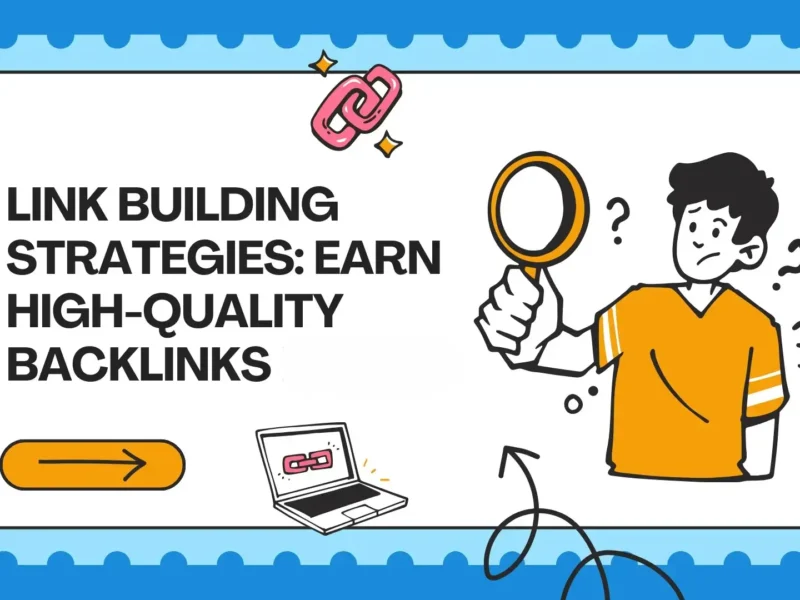In the competitive digital landscape, a beautiful website is only half the battle. If search engines can’t effectively crawl, index, and understand your content, even the most stunning design and compelling copy will struggle to reach its target audience. This is where technical SEO comes into play – the foundational bedrock upon which all other SEO efforts are built. A robust technical SEO audit is not merely a task; it’s a strategic imperative for any website owner serious about performance and rankings. For businesses seeking to enhance their online presence, comprehensive seo services in Noida often begin with a thorough technical audit to uncover foundational issues.
This comprehensive guide will walk you through a detailed technical SEO checklist, empowering you to identify and rectify issues that could be hindering your website’s visibility and user experience. By systematically addressing these elements, you’ll pave the way for improved organic traffic, higher search engine rankings, and ultimately, greater online success.
Understanding the ‘Why’ Behind Technical SEO Audits
Before diving into the specifics, let’s briefly underscore why a regular technical SEO audit is non-negotiable:
- Improved Crawlability & Indexability: Search engines like Google use “spiders” or “bots” to crawl your website and understand its content. Technical SEO ensures these bots can access all important pages without hindrance. If they can’t crawl it, they can’t index it, and if it’s not indexed, it won’t show up in search results.
- Enhanced User Experience (UX): Many technical SEO elements directly impact how users interact with your website. Fast loading times, mobile-friendliness, and a clear site structure all contribute to a positive user experience, which in turn, is a significant ranking factor.
- Boosted Search Engine Rankings: By addressing technical issues, you remove barriers that might be preventing your site from ranking higher for relevant keywords. A technically sound website signals to search engines that your site is well-maintained and provides a good experience.
- Prevention of Penalties: Certain technical misconfigurations, like duplicate content issues or aggressive cloaking, can lead to search engine penalties, severely impacting your organic visibility. Regular audits help you avoid these pitfalls.
- Stay Ahead of Algorithm Updates: Search engine algorithms are constantly evolving. Regular technical audits ensure your website remains compliant with the latest best practices, helping you weather algorithm updates.
Your Comprehensive Technical SEO Audit Checklist
Let’s break down the essential components of a thorough technical SEO audit.
1. Website Speed & Performance
In an age of instant gratification, a slow website is a deal-breaker for both users and search engines. Page speed is a confirmed ranking factor.
Tools to Use: Google PageSpeed Insights, GTmetrix, Pingdom Tools.
- Server Response Time: A slow server can significantly impact loading times.
- Image Optimization: Large, unoptimized images are a common culprit for slow pages. Compress images, use modern formats (like WebP), and implement lazy loading.
- Leverage Browser Caching: Allow browsers to store parts of your website, so subsequent visits are faster.
- Minify CSS, JavaScript, and HTML: Remove unnecessary characters from your code to reduce file sizes.
- Reduce Redirects: Too many redirects can slow down page loading.
- Enable Compression (Gzip): Compress your web files before sending them to the browser.
- Identify Render-Blocking Resources: CSS and JavaScript that prevent the page from rendering quickly.
2. Mobile-Friendliness & Responsiveness
With the majority of internet users accessing websites via mobile devices, mobile-friendliness is no longer optional – it’s a necessity. Google operates on a mobile-first indexing principle.
Tools to Use: Google Mobile-Friendly Test.
- Responsive Design: Does your website adapt seamlessly to different screen sizes?
- Viewport Configuration: Is the viewport meta tag correctly set up?
- Font Sizes & Tap Targets: Are fonts readable and clickable elements easily tappable on mobile?
- Eliminate Horizontal Scrolling: Content should fit within the screen without requiring horizontal scrolling.
- No Flash Content: Flash is not supported on most mobile devices.
3. Crawlability & Indexability
This section focuses on ensuring search engine bots can effectively access and understand your website’s content.
Tools to Use: Google Search Console (Coverage Report, Sitemaps), Screaming Frog SEO Spider, Ahrefs Site Audit.
- Robots.txt File: This file tells search engine bots which pages they can and cannot crawl. Ensure it’s not blocking important pages.
- XML Sitemaps: These files list all the important pages on your website, helping search engines discover your content. Ensure it’s up-to-date and submitted to Google Search Console. It’s crucial to Optimize Sitemap for crawl efficiency.
- Crawl Errors: Check Google Search Console for any “Not Found” (404) or “Server Error” (5xx) issues.
- Index Status: Verify that your important pages are indeed indexed by Google.
- Noindex Tags: Ensure that important pages are not inadvertently marked with a “noindex” tag.
- Canonical Tags: Use canonical tags to prevent duplicate content issues by specifying the preferred version of a page.
- Faceted Navigation: For e-commerce sites, ensure faceted navigation doesn’t create an overwhelming number of crawlable, duplicate URLs.
4. Site Structure & Internal Linking
A well-organized site structure and a robust internal linking strategy are crucial for both user navigation and search engine understanding.
- Logical Hierarchy: Is your website organized in a clear, intuitive hierarchy (e.g., Home > Category > Subcategory > Product)?
- Breadcrumbs: Implement breadcrumbs to enhance user navigation and provide a clear path for search engines.
- Internal Link Depth: Important pages should be easily accessible within a few clicks from the homepage.
- Anchor Text: Use descriptive and keyword-rich anchor text for internal links.
- Broken Internal Links: Identify and fix any broken links that lead to 404 pages.
5. HTTPS & Security
HTTPS is a security protocol that encrypts communication between a user’s browser and your website. It’s a ranking factor and builds user trust.
- SSL Certificate: Ensure you have a valid SSL certificate installed.
- HTTPS Everywhere: Make sure all pages on your website load over HTTPS, not HTTP. Implement 301 redirects from HTTP to HTTPS.
- Mixed Content Warnings: Resolve any instances where your HTTPS page is loading insecure HTTP resources.
6. Structured Data (Schema Markup)
Structured data, or schema markup, helps search engines better understand the content on your pages and can lead to rich results (e.g., star ratings, product prices) in search results.
Tools to Use: Google Structured Data Testing Tool, Schema.org.
- Relevant Schema Types: Identify appropriate schema types for your content (e.g., Product, Article, LocalBusiness, Review).
- Correct Implementation: Ensure the schema markup is correctly implemented and free of errors.
- Rich Results: Verify if your structured data is leading to rich results in search.
7. Duplicate Content Issues
Duplicate content, while not always a penalty, can dilute your ranking signals and confuse search engines.
Tools to Use: Copyscape, Siteliner, Google Search Console (URL Parameters).
- Parameter URLs: Websites with filtering or sorting options can generate multiple URLs for the same content. Use canonical tags or configure URL parameters in GSC.
- WWW vs. Non-WWW, HTTP vs. HTTPS: Ensure you have a consistent preferred domain and protocol.
- Staging/Development Sites: Ensure these are blocked from search engines.
- Syndicated Content: If you syndicate content, ensure proper canonicalization back to the original source.
8. Core Web Vitals
Core Web Vitals are a set of metrics that measure real-world user experience for loading performance, interactivity, and visual stability. They are a significant ranking factor.
Tools to Use: Google Search Console (Core Web Vitals report), PageSpeed Insights.
- Largest Contentful Paint (LCP): Measures loading performance. Aim for under 2.5 seconds.
- First Input Delay (FID): Measures interactivity. Aim for under 100 milliseconds.
- Cumulative Layout Shift (CLS): Measures visual stability. Aim for a score of less than 0.1.
9. Hreflang Tags (for Multilingual Sites)
If your website targets multiple languages or regions, hreflang tags are essential for telling search engines which version of a page to show to users in different locations or languages.
- Correct Implementation: Ensure hreflang tags are correctly implemented in your HTML, HTTP headers, or XML sitemaps.
- Bi-directional Linking: Each language version should link back to the other language versions.
- Self-Referencing: Each page should include a self-referencing hreflang tag.
Executing Your Technical SEO Audit
Performing a technical SEO audit isn’t a one-time event. It should be a recurring process, ideally on a quarterly or bi-annual basis, depending on the size and dynamism of your website.
- Gather Your Tools: Equip yourself with the necessary tools mentioned throughout this checklist.
- Crawl Your Website: Use a desktop crawler like Screaming Frog to get a comprehensive overview of your website’s structure and identify initial issues.
- Prioritize Issues: Not all technical issues have the same impact. Prioritize fixing critical issues first, such as crawl errors, mobile-friendliness issues, and core web vitals.
- Implement Changes: Work systematically through your prioritized list, implementing the necessary fixes.
- Monitor & Re-Audit: After implementing changes, monitor your website’s performance in Google Search Console and other analytics tools. Re-audit periodically to ensure continued health and identify new issues.
Conclusion: The Foundation of SEO Success
A technically sound website is the undisputed foundation of any successful SEO strategy. By diligently working through this technical SEO checklist, you’re not just fixing problems; you’re actively optimizing your website for superior performance, improved user experience, and ultimately, higher rankings in search engine results. This meticulous attention to detail signals to search engines that your website is trustworthy, valuable, and worthy of showcasing to a wider audience.
Don’t let technical glitches hold back your online potential. Start your comprehensive technical SEO audit today and unlock the full power of your website! If you’re unsure where to begin or need expert assistance, consider consulting with a seasoned SEO professional to ensure your website is perfectly tuned for maximum visibility and impact.



